Game Journal
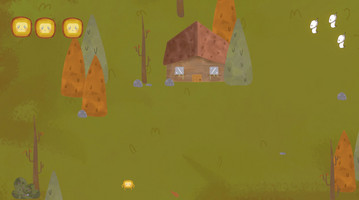
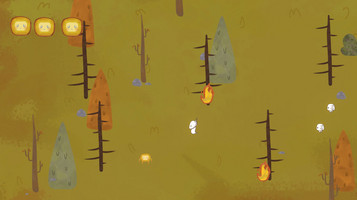
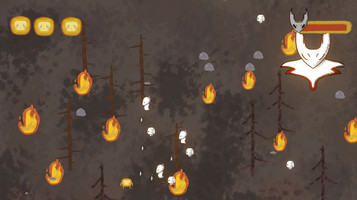
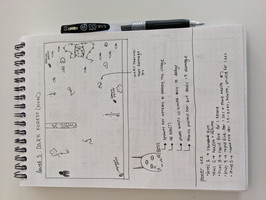
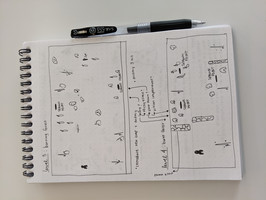
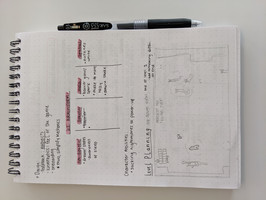
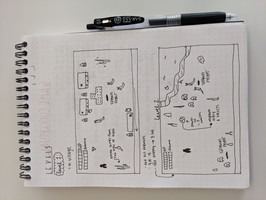

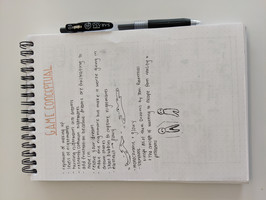
PowerPoint Link: https://docs.google.com/presentation/d/185-UA28lDWJ-Q6kblUH35_FZEPdLYN9SOHl5SKPu...
5:1 Object and properties (128)
Uno:
- Players
- Wild Draw Four Card: black with all four primary colors
- Wild Card: contain all four colors
- Reverse Card: has two arrows to symbolize reverse
- Skip Card: has a crossed-out symbol to symbolize the skip
- Draw Two Card: has two cards on it to symbolize the player to draw cards
- Numbered cards: has numbers ranging from 0- 9 and are each one color
- Wild Draw Four Card: The player declares the color and makes player next to draw four cards
- Wild Card: The player declares the color the dealer draws
- Skip Card: Skips the next player
- Reverse Card: Reverses the order of the players
- Draw Two Card: Player next to go draws two more cards and loses their turn
- Numbered Cards: to help progress the game
Research:
- Celeste
- This game is a platform game in which you play as a girl named Madeline who climbs a mountain while avoiding deadly obstacles. This game adds the basic mechanic of jumping and climbing but adds fun mechanics such as mid-air dash. However, climbing and jumping is timed with her short stamina, so the player needs to move quickly. It is a challenging and frustrating game where you constantly die like platformers such as Super Meat Boy. The visuals and kinesthetics are amazing in this game. It is a simple game mechanic wise but through story, visuals, music, and the world that was created for this game makes this game interesting. The story itself is heavy which attracts players into the story so they can relate as well.
5:2 Behaviors (129)
- Wild Draw Four Card: The player declares the color and makes player next to draw four cards
- Wild Card: The player declares the color the dealer draws
- Skip Card: Skips the next player
- Reverse Card: Reverses the order of the players
- Draw Two Card: Player next to go draws two more cards and loses their turn
- Numbered Cards: to help progress the game
5:3 Relationships (131)
The Numbered Cards’ relationship to the game is the least powerful, it is simply to progress the game and allow players to get rid of cards. The Reverse Cards allows the player that drew it to reverse the order of the players. The Skip Cards are just as powerful because you can the player next to you gets their turn skipped. The Wild Cards gives you the power to change the color of the deck, usually putting it to your advantage to get rid of as many cards as you can. The Draw Two Cards disrupt the player next to you but more efficiently, this is because the next player has to draw two cards from the deck. The Wild Draw Four Card is the most powerful card to have. This is because the player is able to make the player next to them draw four cards, slowing their progression of winning, and you have the ability to change the color of the deck. Again, so you can get rid of the colors you have the most of in your hand.
5:4 System Dynamics (137)
- You can only progress in the game if you have the same number that has been dealt, if not you skip a turn and draw from the deck. Colors do not matter.
- The balance is way off, it became boring and slow, unlike how it normally was where it was fun and a fast-paced game. The game isn’t a playable game because people would get their turn skipped and they would keep drawing cards, defeating the purpose of how to win the game. Furthermore, the specialty cards such as the Wild Card, Skip Card, Reverse Card and Wild Draw Four Cards were all based off colors not the numbers. This also made the game less exciting because you couldn’t affect other players.
6:2 Game Deconstruction (167)
Uno is a fast-paced, strategic card game in which you have to get rid of all of your cards first. The first player must place a card down that matched the color, number or symbol in order to progress in the game. As you play the game, you must strategize to how you are going to discard all of your cards. Each player has seven cards, and you don’t know what cards they have. So, there is a lot of guessing when it’s their turn. Using the specialty cards like the Wild Draw Four Cards, you make the game play in your favor because you are making someone draw four more cards and you get to choose the color of the deck. The most popular strategy is to hold onto the Wild Card or Wild Draw Four Card because this card can be your last card you put down, making it easier for you to win. Another forgotten rule, however, is if the person with one card forgets to shout UNO, and someone else does before them. The person loses their chance of winning and has to take two cards from the deck. Thus, the players always have to be aware of each other. This game is a social game, it’s entertaining when you don’t let someone win, and it’s fun when you just play the game and break each other’s chops when you put down a skip card or draw two cards. It balances the competitiveness of the game but also allows the players to have a fun and enjoyable experience.
Research: Super Mario 3
Super Mario 3 is a side-scoller game where Mario has a new ability. That ability is to float longer in the air with his tail and ears. He is also allowed to hit enemies with the tail as well. Additional abilities Mario can perform are sliding down slopes, grabbing blocks, throwing, and climbing. Furthermore, this game includes levels in which you can obtain lives or objects, this was a new element that was introduced in the game and helps the player progress through the levels. The levels themselves are even more complex, unlike the first Super Mario, which became quite repetitive. This game can also be played by two people one can be Mario and one can be Luigi and instead of playing on the same level at the same time, if a player loses the level, then the next brother will play. So, they take turns. Super Mario 3 has introduced new mechanics, power-ups and player interactivity within this game. I think the aesthetics as well are very pleasing with a selective color scheme in each level but the use of a peachy pink and a cyan blue pops out to me the most, making it is visually appealing.
Chapter 8: Digital Protoyping
Exercise 2.7(43)
Premise for Risk: It is a strategy board game and player’s goal is to conquer enemies’ territories. To do so, they have to build an army and battling their opponent.
Premise for Clue: Players move from different rooms to solve a mystery.
Premise for Pit: It is a fast-paced card game where you are participating in an open outcry auction for commodities.
Premise for Guitar Hero: A music rhythm game where the controllers are the shape of instruments in a band.
Exercise 2.8(44)
The story in Life is Strange really stuck with me emotionally and also sparked interest in alternative universes / space & time stories. This game was able to strike me emotionally because of how much control we have over the protagonist Max. We hear her thoughts, our choices and actions have consequences, and the relationships between a lot of the other characters is based off how we interact with them. The designers used a lot of drama in the game. The opening scene of the game is the player being in a huge, dangerous storm with a lighthouse falling on top of you. Then, you wake up in the mundane classroom. It grabs your interest immediately. Then you soon find out you have powers to time travel and saves a girl in the bathroom who gets shot. All of this within the beginning of the game makes the game emotionally intense. The story and the characters and how the player interacts with everything sucks you in as you start to bond with the character too.
Exercise 4.1(97)
In this game of checkers, a kingdom is protecting its kingdom from evil monsters like dragons and goblins from taking over their territory. Having a backstory like this makes the other players more intrigued by the game instead of just a game of checkers. However, considering I didn’t change if there were abilities of each piece except when you turn the player into a king, not much happened. It was still a game of checkers but with a more interesting backstory to it. If the game of checkers also changed visually, that would have helped too.
Research: Celeste
This game is a platform game in which you play as a girl named Madeline who climbs a mountain while avoiding deadly obstacles. This game adds the basic mechanic of jumping and climbing but adds fun mechanics such as mid-air dash. However, climbing and jumping is timed with her short stamina, so the player needs to move quickly. It is a challenging and frustrating game where you constantly die like platformers such as Super Meat Boy. The visuals and kinesthetics are amazing in this game. It is a simple game mechanic wise but through story, visuals, music, and the world that was created for this game makes this game interesting. The story itself is heavy.
Research: Hollow Knight
Hollow Knights is a 2d action-adventure game that takes place in a kingdom called Hallownest. In order to fight off enemies, the standard attack is melee combat, but the player can learn spells that enables them to use long range attacks. Along the way and as you attack enemies, you collect Geos which is the currency in Hollow Knight. Furthermore, the player has a limited number of masks which are similar to health. Luckily, you are able to collect shards of masks to replenish that stat. What is interesting about this game is that when you die, Shade and you lose all your Geos and have a reduced amount of Soul. But you have a chance of regaining that back if you fight the Shade. As you progress in this game you evolve, gaining more abilities and skills to fight off stronger enemies and bosses. This game has beautiful visuals and UI. All animations were done in Photoshop (which is crazy) which shows their talent in the animation realm. They also got some help with Playmaker for code to create enemies and interactive elements.
Reading Response:
Chapter 8: Prototyping
This chapter was very informational about how digital prototyping can be useful. Often at times for class, I would think how nicely a game looks, but not the kinesthetics, the mechanics, and gameplay issues that need to be addressed. For class especially, I would freak out thinking a prototype should be a pretty good playable game, a good idea on how I am going to solve the issues I’m facing, and exactly how I want the game to look. However, after reading this chapter, it pretty much is the exact opposite. So, when I am creating my SHMUP game, I really want to keep in mind the kinesthetics, the planning of the levels and mechanics and not focus so much on how my game looks in the very beginning stages of the development. Furthermore, if I am so involved with the aesthetics of the game, I should balance how I should balance prototyping mechanics and aesthetics. I liked the list of things you can do in order to prototype aesthetics. Storyboards, concept art, animatic or an interface prototype are a few things that you can do. Aesthetics are often dismissed when prototyping out games in class, but I think it is important to consider these things in order to give the player a more enjoyable experience through visuals and through kinesthetics and mechanics.
Chapter 4:
This chapter really drew me in. Dramatic elements such as story, characters, conflict makes a game more interesting besides its formal aspects. Storytelling is another way of communicating thoughts and ideas this being able to make it enjoyable and interactive sucks in the player. I’m currently taking an Immersive Storytelliing class so all we talk about it the relationship between technology and stories and how one can make a story so reading this chapter, I agreed to a lot of what was stated. Understanding human-computer interactivity and how to suck one into the story and gameplay influences how enjoyable and fun a game is. I thought a question that was asked in the reading about play and the story was, “How can you give your players clear, focused goals, meaningful choices, and discernible feedback?” reminded me of what game designer, Sean Krankel of Night School Studio who helped make Oxenfree said during the talk he gave during GDC was talking about the writing process, mechanics, and character development. What stood out to me when talking about characters is that the designers thought was why was the main character (Alex) doing what she was doing before the conflict and how / why did she resolve it? Furthermore, he talked about mechanics and story. He states, “Story inspired our mechanics, and mechanics empower players to tell their own story.” Since the dialogue and communication in this game is an ability not a menu choice. This game helps me understand how important story can impact how the gameplay and the player’s experience and how through the designer’s perspective, what to think of when writing out your game. Another interesting game that makes the player very emotionally attached is Inside. There is no talking in this game and all you know is that you’re running away from guards in this huge facility. Yet as you reach towards the end of the game, bad thing inevitability happen to the character even as the player is doing their best to prevent it from happening. The ending is absolutely heartbreaking and its unbelievable how sad and upset I was as a player, that THIS happened to this poor boy who just wanted to be free. Even without a complex story, gameplay and visuals can help tell an emotionally striking story.
Files
Get Forest Fire
Forest Fire
save the forest you live in!
| Status | Released |
| Author | Nicole Polidore |
| Genre | Shooter |
| Tags | 2D, Cute, Shoot 'Em Up, Top-Down, Top down shooter |
More posts
- DevlogOct 01, 2019
- PostmortemOct 01, 2019
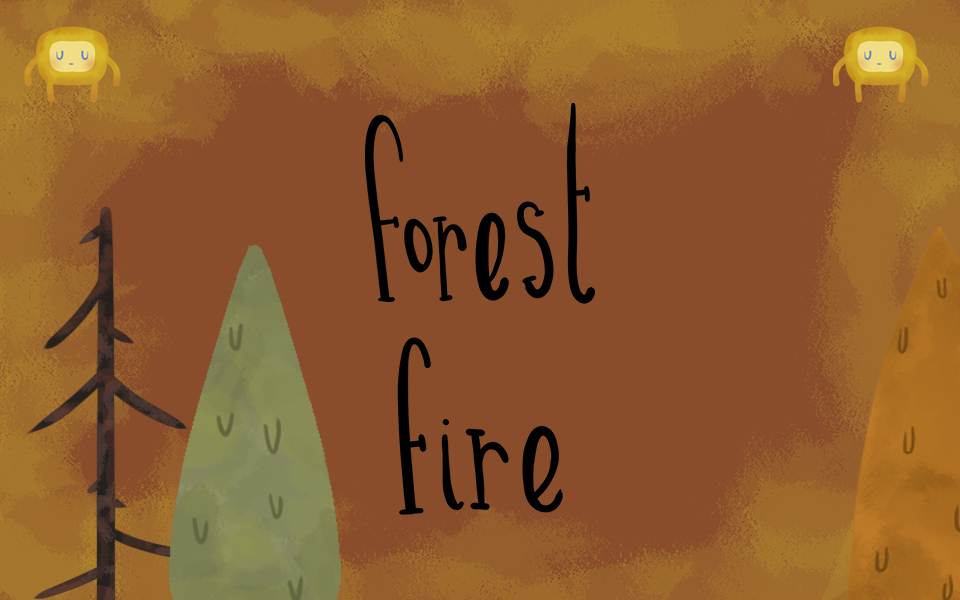
Leave a comment
Log in with itch.io to leave a comment.